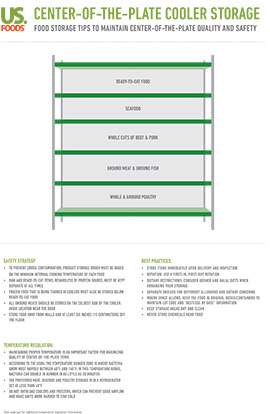Chicken Tenders
Breaded chicken is on nearly every menu, but it is still underutilized by many operators. Chicken tenders are a versatile, time-saving staple, perfect for any menu.
Learn more about variations such as tender types, cooking profiles, breading styles, sizes and more to make the right choice for your needs and operation.Page contents:
Meat Forms | Cooking Profiles | Breading Percentages | Tender Sizes | Breading Styles | Breading Flavors | Storage and Handling
Meat Forms
Depending on the needs of your operation, choosing the right meat form can save your staff prep time and help reduce waste, saving you money. Below are common chicken tender meat forms available to best fit your budget and menu.
Tenderloin
- Premium, whole muscle cuts from the tenderloin of the chicken breast
- The tenderloin is located next to the breastbone under a larger breast muscle and is typically the most flavorful part of chicken breast. This small breast muscle has a characteristic teardrop shape.
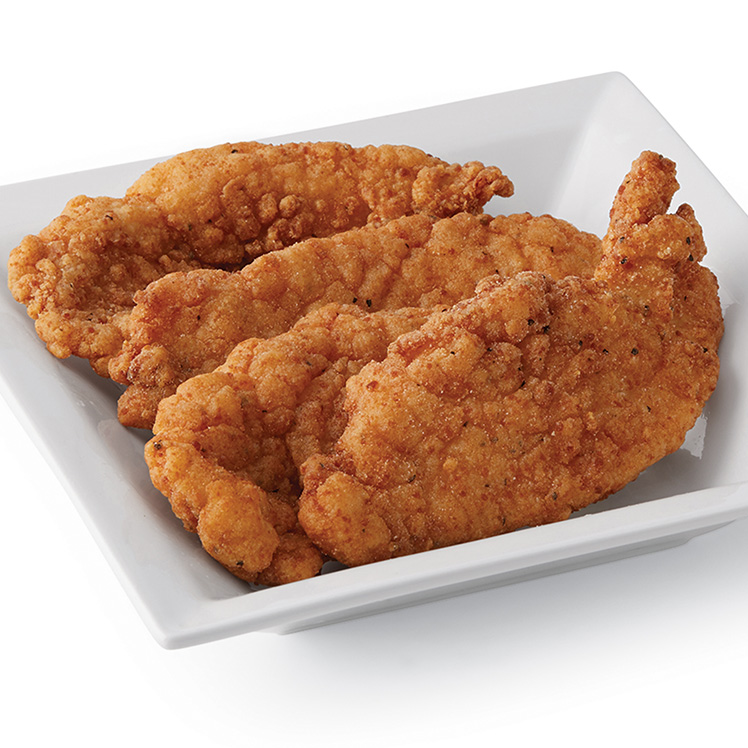
Strips
- Value-priced whole muscle cut coming directly from boneless, skinless chicken breast
- Size and shape of strips can vary, and are not usually in a teardrop shape
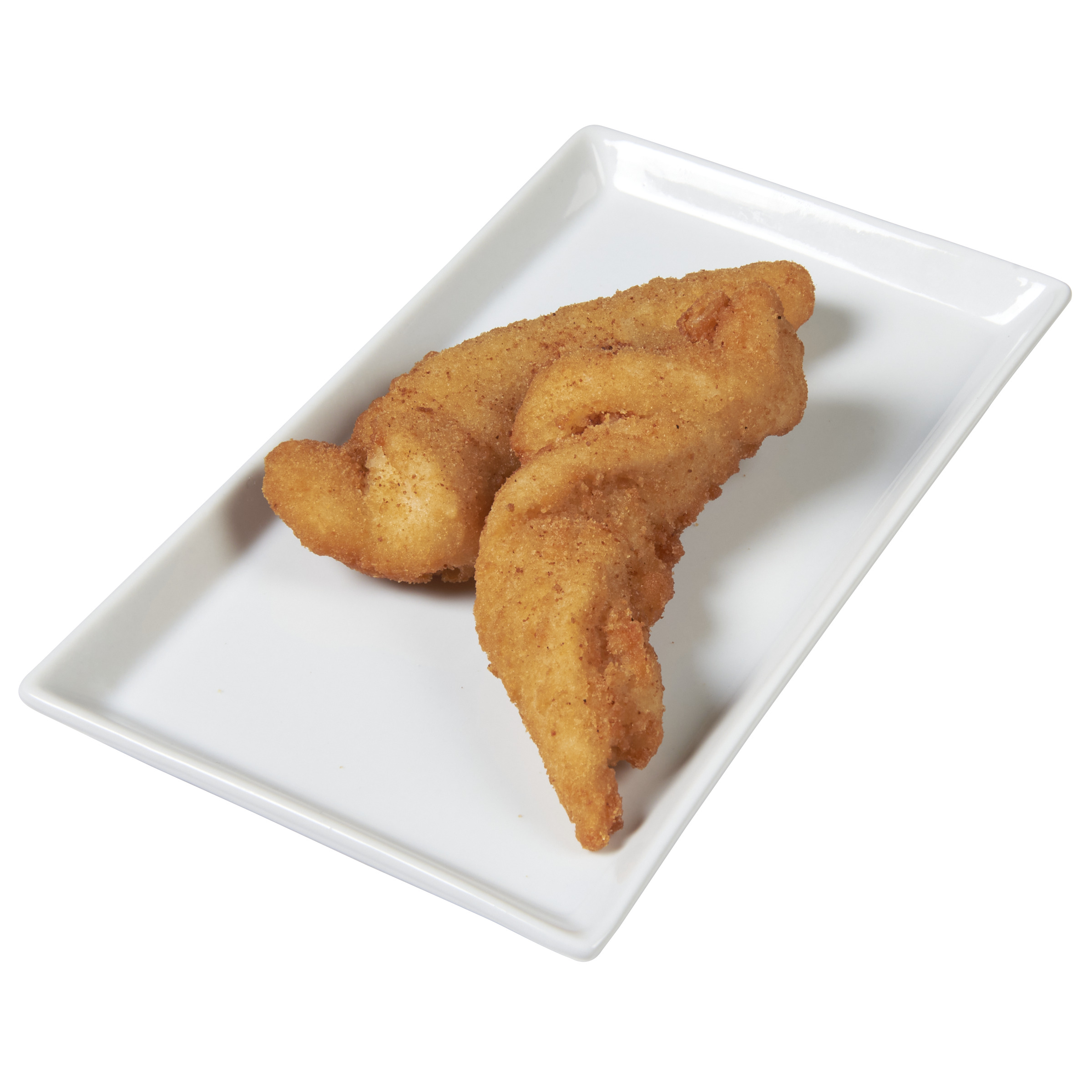
Portioned Tenderloins
- Whole muscle tenderloin meat
- Trimmed and formed together into a tenderloin shape
- Size and shape may vary
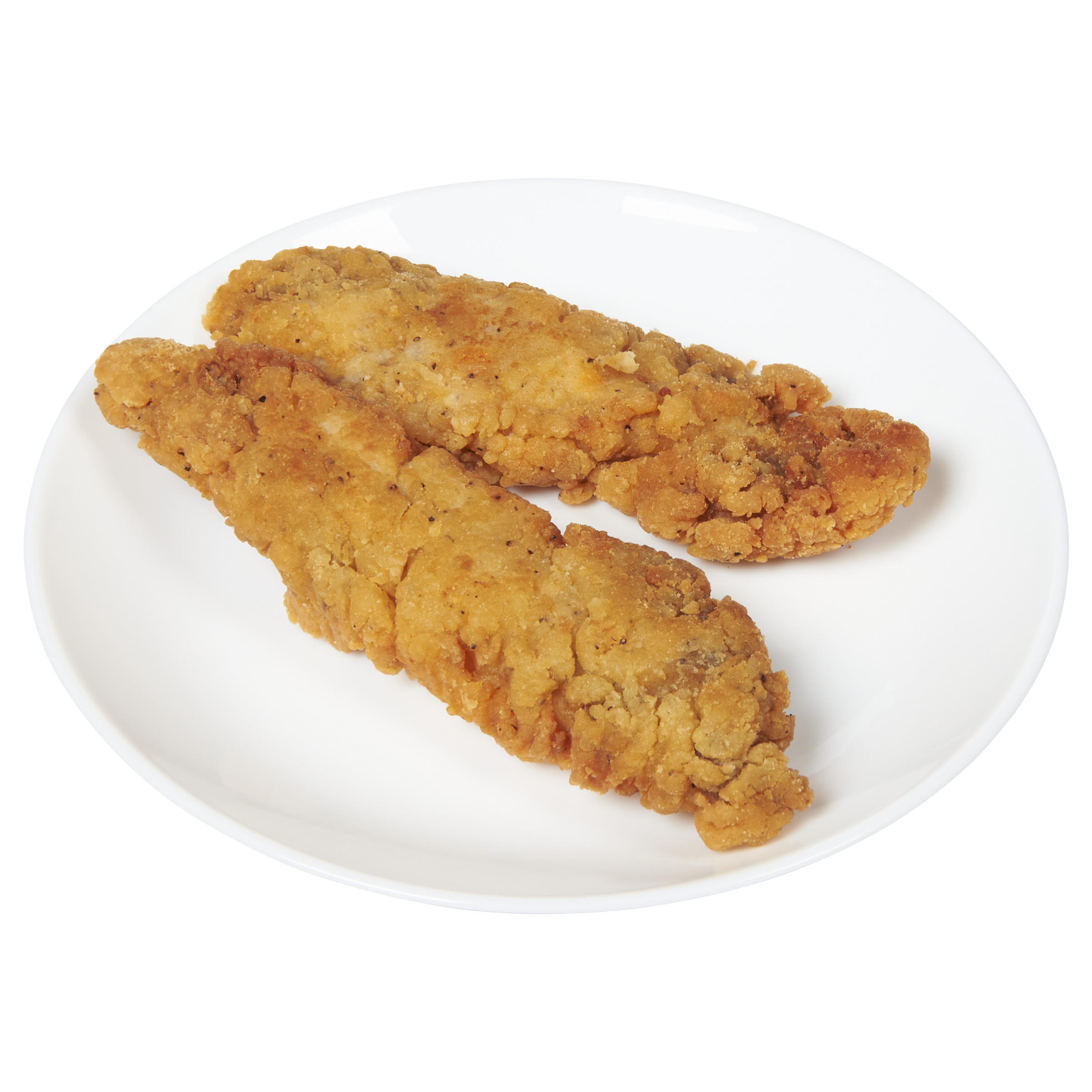
Tenders
- Finely chopped pieces of breast meat
- Formed together into a tenderloin shape
- Size and shape may vary
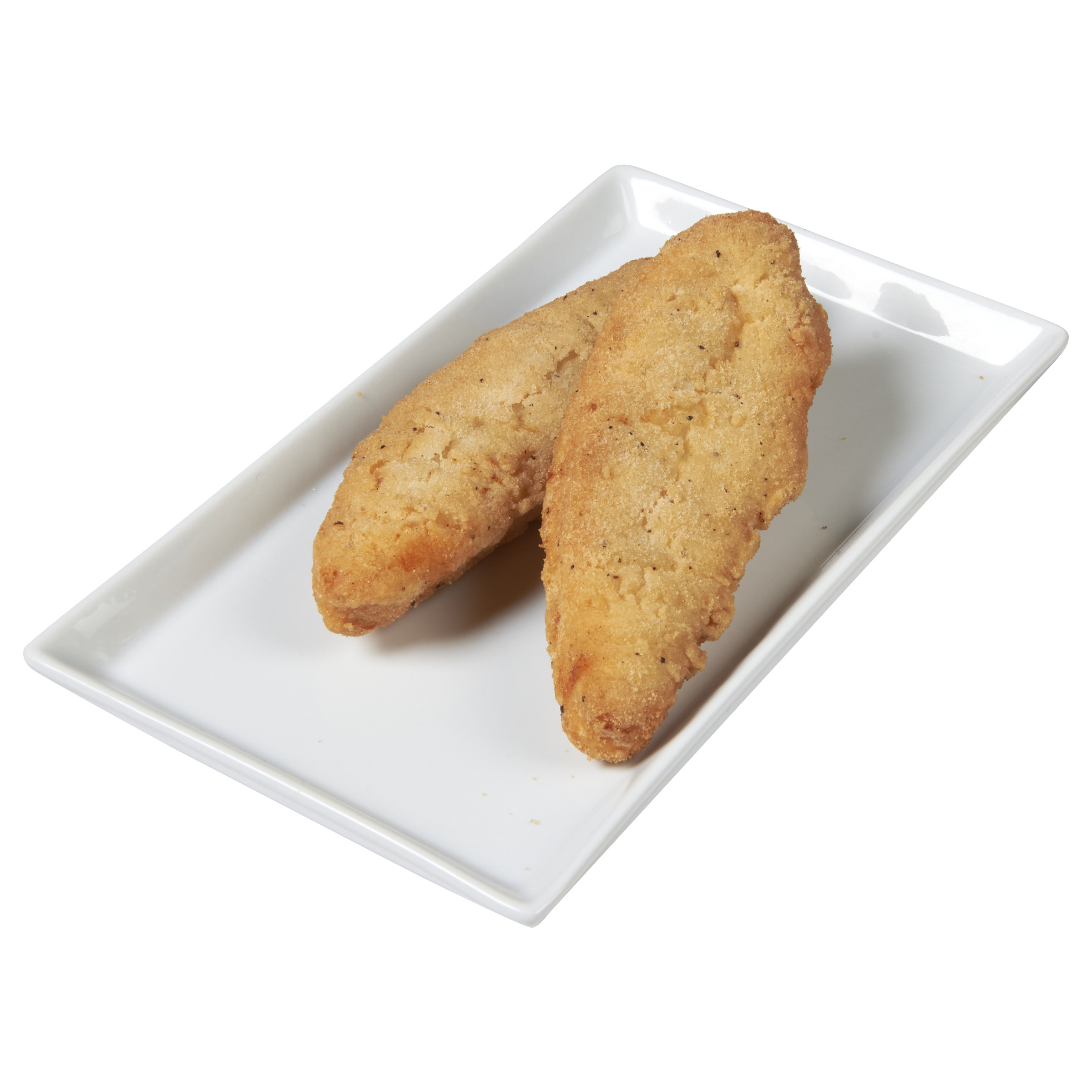
COOKING PROFILES
Depending on the needs of your operation, choosing the right product can save your staff prep time and help reduce waste, saving you money. Consider the following cooking profiles available to best fit your budget and menu.
Fully cooked:
- These products save time and labor by simply frying or baking in an oven
- Heat and serve per instructions on packaging
Par-fried:
- Partially cooked, these products have a quicker cooking time compared to raw products
- A quick dip in deep fryer sets the breading for crispy tenders
- Must be cooked to an internal temperature of 165°F
- Ready to cook and serve
Raw:
- Raw products have longer cooking times and must be fully cooked, but can be more cost-effective options
- A quick dip in the deep fryer sets the breading for crispy tenders
- Must be cooked to an internal temperature of 165°F
- Ready to cook and serve
Sizes
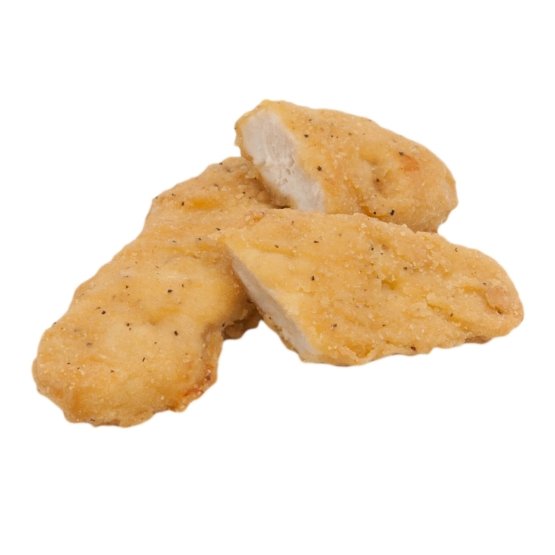
- 1.5-2 oz.*

- 2-2.5 oz.*

- 2.5-3 oz.*

- Sizes vary*
*Approximate ounce ranges.
Breading Styles
Classic:
- Also known as “Flat breaded”
- Offers a consistent uniform breading appearance on both sides
Homestyle:
- Also known as “Barrel breaded”
- A hand-breaded appearance obtained by tumbling the chicken in breading mix
- Peaks and valleys provide a back-of-house look
Battered:
- Lightly coated with dry flour and batter to deliver a hearty crunch
- Tempura and beer are two common batter styles. Tempura is a Japanese style made with flour, egg and water for an airy, light and crispy texture. Beer batter is a coating made with flour and pale lager for a distinct flavor, light coating and crispy texture
Italian Breaded:
- A breading combining rich Romano and Parmesan cheese notes and visually appealing Italian herbs and seasonings
Panko Breaded:
- Coating made with Japanese breadcrumbs for a crispy texture that may allow for a longer hold time
- A delicious, crispy texture ideal for dipping sauces
Breading Percentage
Breading percentage: breading to protein ratio. The USDA requires manufacturers to label product as a fritter, since it is visually difficult to distinguish the difference between a fritter and non-fritter.
Fritter:
- More than 30% of the total weight of the product is breading. Typically the higher the percentage of breading, the lower the cost of the product.
Non-fritter:
- With less than 30% of the total weight of the product being breading, these products are typically more expensive, due to the higher ratio of meat in each bite.
BREADING FLAVOR
Breading flavors help level up chicken tenders to help you create craveable dishes your diners will come back for again and again.
| BREADING FLAVOR: | Flavor Profile | Color | Breading | Texture |
|---|---|---|---|---|
| Golden | Clean, Mild Chicken | Blond | Flour and Cracker Meal | Light, Soft Crunch |
| Savory | Savory Blend or Garlic and Onion | Golden Brown | Flour and Cracker Meal | Light, Soft Crunch |
| Hot & Spicy | Red Pepper Heat | Golden Brown with a Red Hue | Flour | Light, Soft Crunch |
| Buffalo | Hot Sauce and Vinegar | Reddish Brown | Flour | Firm Crunch |
STORAGE AND HANDLING
Due to the various cooking profiles, please reference COP Cooler Map for the best ways to safely store and handle chicken tenders.


